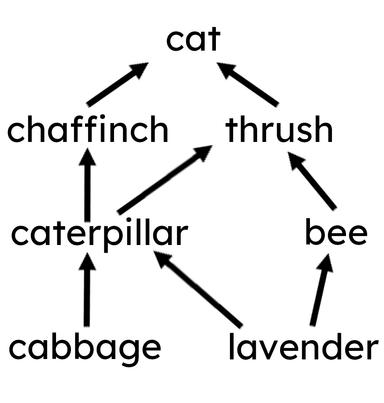Myths about teaching can hold you back
- Year 8
Interdependence within ecosystems
I can describe ways in which organisms are interdependent within ecosystems.
- Year 8
Interdependence within ecosystems
I can describe ways in which organisms are interdependent within ecosystems.
These resources were made for remote use during the pandemic, not classroom teaching.
Switch to our new teaching resources now - designed by teachers and leading subject experts, and tested in classrooms.
Lesson details
Key learning points
- Ecosystems are made up of a community of organisms that interact with each other and their non-living surroundings.
- Organisms in an ecosystem are interdependent because they depend upon each other for the things they need to survive.
- All organisms depend upon producers to make the food that moves through food chains.
- Dead organisms and remains of living organisms provide food for other organisms.
- All living organisms depend upon decomposers that break down dead organisms and recycle useful substances for reuse.
Keywords
Ecosystem - An ecosystem is made up of all the living organisms in a place, interacting with each other and their non-living surroundings.
Interdependent - All organisms within an ecosystem are interdependent because they depend upon each other for the things they need to survive.
Producer - A producer is an organism that makes its own food.
Cellular respiration - Cellular respiration is a chemical process where food is used as a fuel to provide energy for life processes.
Decomposer - A decomposer is an organism that feeds on the remains of other living organisms.
Common misconception
It is common to think that organisms, especially humans, can survive without other organisms.
This lesson highlights and explores the key concept that all living organisms are dependent upon other organisms for their survival.
To help you plan your year 8 science lesson on: Interdependence within ecosystems, download all teaching resources for free and adapt to suit your pupils' needs...
To help you plan your year 8 science lesson on: Interdependence within ecosystems, download all teaching resources for free and adapt to suit your pupils' needs.
The starter quiz will activate and check your pupils' prior knowledge, with versions available both with and without answers in PDF format.
We use learning cycles to break down learning into key concepts or ideas linked to the learning outcome. Each learning cycle features explanations with checks for understanding and practice tasks with feedback. All of this is found in our slide decks, ready for you to download and edit. The practice tasks are also available as printable worksheets and some lessons have additional materials with extra material you might need for teaching the lesson.
The assessment exit quiz will test your pupils' understanding of the key learning points.
Our video is a tool for planning, showing how other teachers might teach the lesson, offering helpful tips, modelled explanations and inspiration for your own delivery in the classroom. Plus, you can set it as homework or revision for pupils and keep their learning on track by sharing an online pupil version of this lesson.
Explore more key stage 3 science lessons from the Biodiversity unit, dive into the full secondary science curriculum, or learn more about lesson planning.

Content guidance
- Depiction or discussion of sensitive content
Supervision
Adult supervision recommended
Licence
Prior knowledge starter quiz
6 Questions
Q1.True or false? A food chain shows the transfer of biomass.
Q2.Which of the following are biotic factors?
Q3.What do plants and animals need from their habitat?
Q4.Organisms that consume other organisms are known as ...
Q5.What will happen if the cabbage population decreases?

Q6.What will happen to the population of hawks if the grass population decreases?

Assessment exit quiz
6 Questions
Q1.An is made up of all the living organisms in a place, interacting with each other and their non-living surroundings.
Q2.Which organism is a producer?

Q3.Which of the following is a decomposer?



